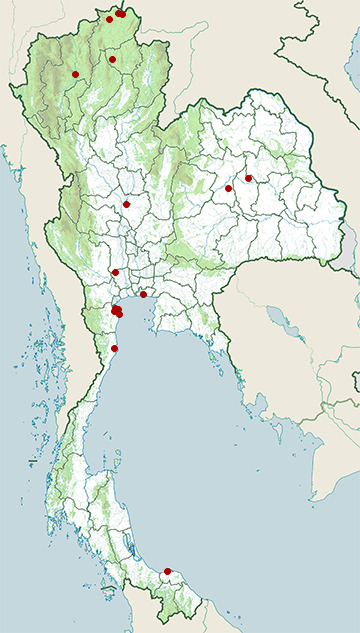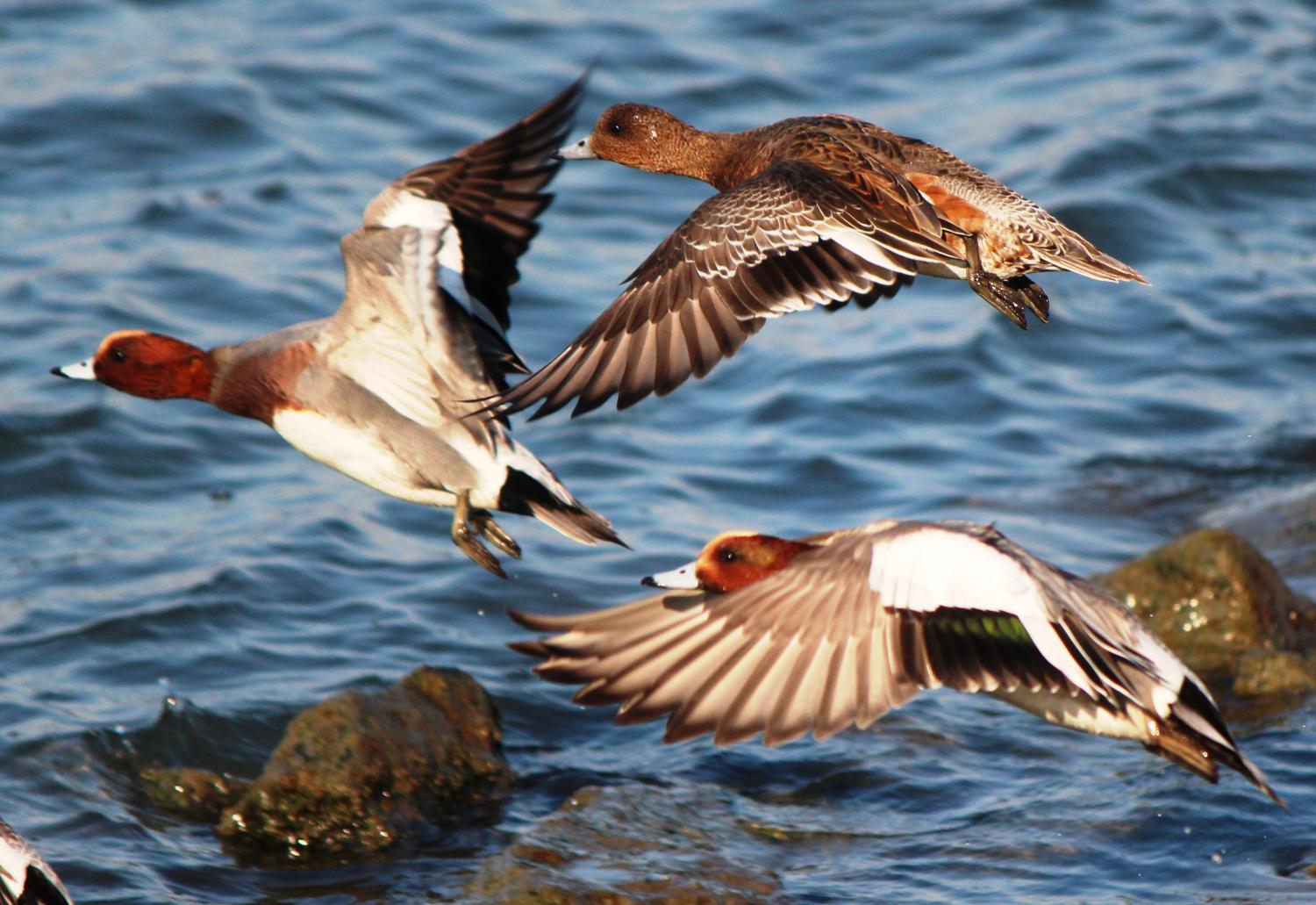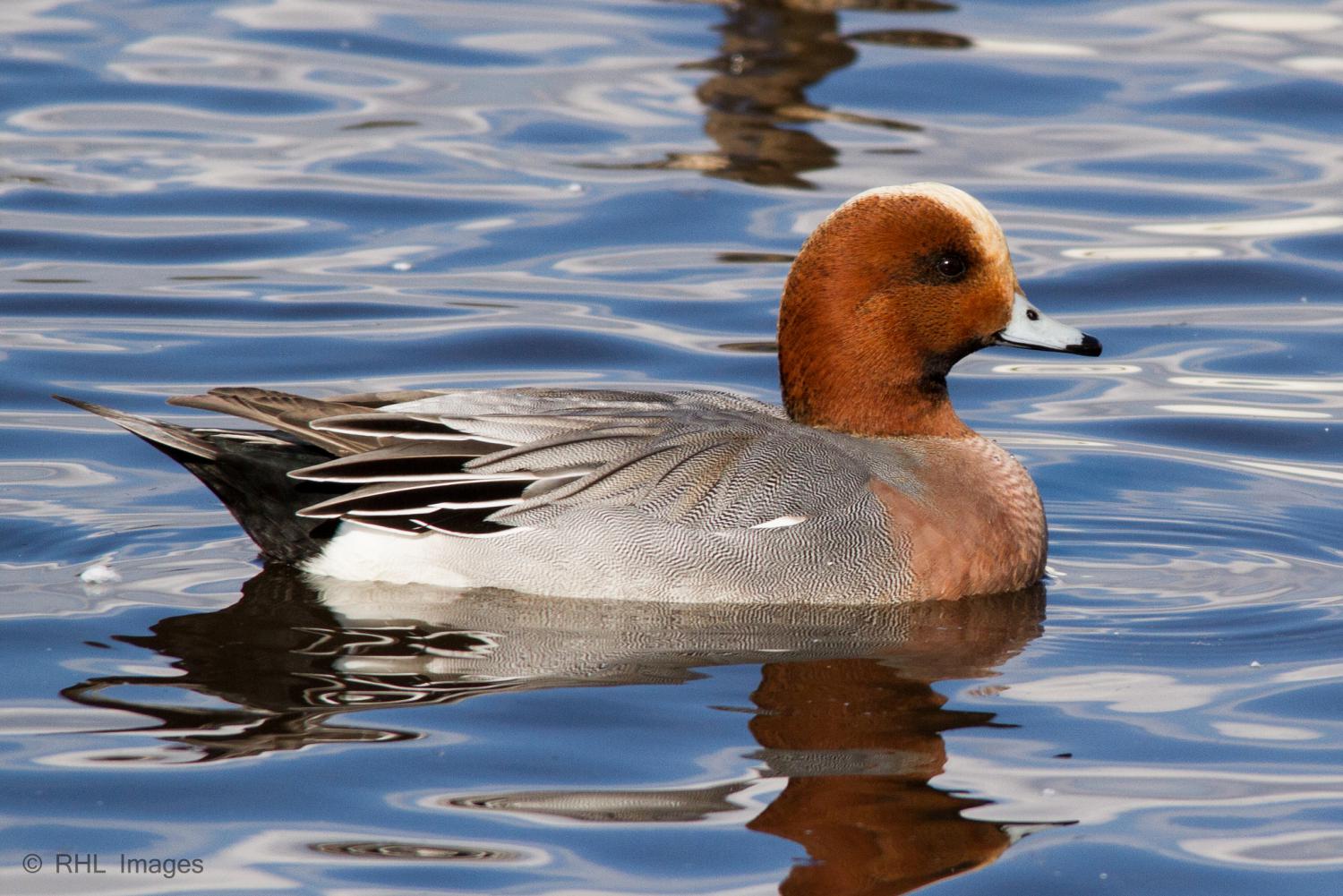Species of Thailand
Eurasian wigeon
Mareca penelope
Carolus Linnaeus, 1758
In Thai: เป็ดปากสั้น
The Eurasian wigeon, also known as widgeon (Mareca penelope) is one of three species of wigeon in the dabbling duck genus Mareca. It is common and widespread within its Palearctic range.
Taxonomy
The Eurasian wigeon was described by Carl Linnaeus in his landmark 1758 10th edition of Systema Naturae under the binomial name Anas penelope. Anas is the Latin for "duck", and penelope refers to a duck that was supposed to have rescued Penelope when she was thrown into the sea. Her name derives from Ancient Greek πήνη pene, "braid" and ὤψ ops "appearance", from the ruse she used to deter suitors while her husband Ulysses was absent.
Description
This dabbling duck is 42 – 52 cm long with a 71 – 80 cm wingspan, and a weight of 500 - 1073 g. The breeding male has grey flanks and back, with a black rear end, a dark green speculum and a brilliant white patch on upper wings, obvious in flight or at rest. It has a pink breast, white belly, and a chestnut head with a creamy crown. In non-breeding (eclipse) plumage, the drake looks more like the female. The female is light brown, with plumage much like a female American wigeon. It can be distinguished from most other ducks, apart from American wigeon, on shape. However, that species has a paler head and white axillaries on its underwing. The female can be a rufous morph with a redder head, and a gray morph with a more gray head.
Distribution
It breeds in the northernmost areas of Europe and the Palearctic. It is the Old World counterpart of North America's American wigeon. It is strongly migratory and winters further south than its breeding range. It migrates to southern Asia and Africa. In Great Britain and Ireland, the Eurasian wigeon is common as a winter visitor, but scarce as a breeding bird in Scotland, the Lake District, the Pennines and occasionally further south, with only a handful of breeding pairs in Ireland. It can be found as an uncommon winter visitor in the United States on the mid-Atlantic and Pacific coasts. It is a rare visitor to the rest of the United States except for the Four Corners and the southern Appalachians.
Behaviour and habitat
The Eurasian wigeon is a bird of open wetlands, such as wet grassland or marshes with some taller vegetation, and usually feeds by dabbling for plant food or grazing, which it does very readily. It nests on the ground, near water and under cover. It is highly gregarious outside of the breeding season and will form large flocks. They will join with flocks of the American wigeon in the United States, and they also hybridize with them. This is a noisy species. The male has a clear whistle that sounds like: "pjiew pjiew", whereas the female has a low growl: "rawr".
The Eurasian wigeon is one of the species to which the Agreement on the Conservation of African-Eurasian Migratory Waterbirds (AEWA) applies. Its conservation status is least concern.
This article uses material from Wikipedia released under the Creative Commons Attribution-Share-Alike Licence 3.0. Eventual photos shown in this page may or may not be from Wikipedia, please see the license details for photos in photo by-lines.
Category / Seasonal Status
Wiki listed status (concerning Thai population): Winter visitor
BCST Category: Recorded in an apparently wild state within the last 50 years
BCST Seasonal status: Non-breeding visitor
Scientific classification
- Kingdom
- Animalia
- Phylum
- Chordata
- Class
- Aves
- Order
- Anseriformes
- Family
- Anatidae
- Genus
- Mareca
- Species
- Mareca penelope
Common names
- Thai: เป็ดปากสั้น
Synonyms
- Anas penelope, Carolus Linnaeus (1758)
Conservation status

Least Concern (IUCN3.1)
Photos
Please help us review the bird photos if wrong ones are used. We can be reached via our contact us page.
Range Map

- Ban Laem District, Phetchaburi
- Ban Phai District, Khon Kaen
- Bang Pu Recreation Centre
- Bueng Boraped Non-Hunting Area
- Chiang Saen District, Chiang Rai
- Kamphaeng Saen District, Nakhon Pathom
- Kantharawichai District, Maha Sarakham
- Khao Sam Roi Yot National Park
- Laem Pak Bia
- Mae Chan District, Chiang Rai
- Mueang Chiang Mai District, Chiang Mai
- Mueang Pattani District, Pattani
- Mueang Phayao District, Phayao
- Mueang Phetchaburi District, Phetchaburi
- Nong Bong Khai Non-Hunting Area
- Pak Thale


